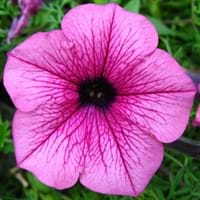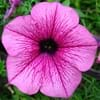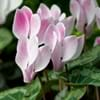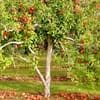Type
Flowering Plants, Shrubs
Tree
Origin
South America
Middle Africa
Types
Grandiflora Petunias, Multiflora Petunias, Wave Petunias, Superbell Petunias, Supertunia Petunias
Not Available
Habitat
Terrestrial
Moist Soils
USDA Hardiness Zone
9-10
3-9
AHS Heat Zone
Not Available
12 - 1
Sunset Zone
not provided
H1, H2, 1a, 1b, 2a, 2b, 3a, 3b, 4, 5, 6, 7, 8, 9, 10, 11, 12, 13, 14, 15, 16, 17, 19, 20, 21, 22, 23, 24
Habit
Not Available
Upright/Erect
Flower Color
Blue, Pink, Purple, Red, White, Yellow
White
Flower Color Modifier
Not Available
Bicolor
Fruit Color
Not Available
Orange, Gold, Orange Red
Leaf Color in Spring
Golden Green
Green, Light Green
Leaf Color in Summer
Green
Green, Light Green
Leaf Color in Fall
Green
Green, Yellow green
Leaf Color in Winter
Green
Light Green
Leaf Shape
Ovate
imparipinnate
Plant Season
Summer
Summer, Fall
Sunlight
Full Sun, Partial shade
Full Sun, Partial Sun
Type of Soil
Loamy, Sandy
Loam
The pH of Soil
Neutral
Acidic, Neutral
Soil Drainage
Well drained
Well drained
Bloom Time
Fall, Spring, Summer
Summer
Tolerances
Pollution
Drought
Where to Plant?
Container, Ground, Pot
Ground
How to Plant?
Seedlings, Transplanting
Seedlings
Plant Maintenance
Medium
Medium
Watering Requirements
Keep the ground moist but not water-logged, Requires regular watering, Requires watering in the growing season
Requires a lot of watering
In Summer
Lots of watering
Lots of watering
In Spring
Moderate
Moderate
In Winter
Average Water
Average Water
Soil Type
Loamy, Sandy
Clay
Soil Drainage Capacity
Well drained
Rich
Sun Exposure
Full Sun, Partial shade
Full Sun
Pruning
Cut or pinch the stems, Do not prune during shooting season, Remove dead or diseased plant parts, Remove deadheads
Remove damaged leaves, Remove dead branches, Remove dead leaves
Fertilizers
All-Purpose Liquid Fertilizer
All-Purpose Liquid Fertilizer
Pests and Diseases
Aphids, Bacterial Blight, Caterpillars, Gray mold, Leaf spot, Powdery mildew, Root rot, Spider mites, Thripes, Verticillium Wilt, Viruses
Red blotch
Plant Tolerance
Drought
Drought
Flowers
Yes
Insignificant
Flower Petal Number
Not Available
Single
Fragrant Bark/Stem
Yes
No
Foliage Texture
Medium
Coarse
Foliage Sheen
Matte
Matte
Attracts
Butterflies, Hummingbirds
Birds
Allergy
Not Available
Not Available
Aesthetic Uses
Beautification, Bouquets, Showy Purposes
Not Available
Beauty Benefits
Not Available
Not Available
Environmental Uses
Air purification
Air purification
Medicinal Uses
Not Available
Anti-oxidant, Digestive, Fiber, Minerals
Part of Plant Used
Flowers
Flowers, Fruits, Leaves, Seeds
Other Uses
Showy Purposes
Animal Feed, For making oil, Used as a nutritious food item
Used As Indoor Plant
Yes
No
Used As Outdoor Plant
Yes
Yes
Garden Design
Bedding Plant, Container, Edging
Fruit Tree
Botanical Name
Petunia
SOLANUM integrifolium
Common Name
Petunia
Chinese Scarlet Eggplant, Pumpkin Tree, Turkish Eggplant, Turkish Orange Eggplant
In Hindi
Petunia
कद्दू पेड़
In German
Petunie
Kürbis-Baum
In French
Pétunia
arbre de citrouille
In Spanish
Petunia
árbol de calabaza
In Greek
πετούνια
δέντρο κολοκύθας
In Portuguese
Petúnia
árvore abóbora
In Polish
Petunia
drzewa dyni
In Latin
Petunia
PEPO ligno
Phylum
Streptophyta
Magnoliophyta
Class
Magnoliopsida
Magnoliopsida
Order
Solanales
Scrophulariales
Family
Solanaceae
Oleaceae
Clade
Angiosperms, Asterids, Eudicots
Not Available
Tribe
Not Available
Not Available
Subfamily
Petunioideae
Not Available
Difference Between Petunia and Pumpkin Tree
If you are confused whether Petunia or Pumpkin Tree are same, here are some features about those plants to help you choose better. Many people think that these two plants have the same characteristics, but one can see Petunia and Pumpkin Tree Information and learn more about it. Fertilizers required for proper growth of Petunia are All-Purpose Liquid Fertilizer, whereas for Pumpkin Tree fertilizers required are All-Purpose Liquid Fertilizer. Hence, one should know the basic difference between Petunia and Pumpkin Tree if you are planning to have them in your garden to enhance its beauty.
<
Flowering PlantsImportance of Petunia and Pumpkin Tree
Want to have the most appropriate plant for your garden? You might want to know the importance of Petunia and Pumpkin Tree. Basically, these two plants vary in many aspects. Compare Petunia and Pumpkin Tree as they differ in many characteristics such as their life, care, benefits, facts, etc. Every gardener must at least have the slightest clue about the plants he wants to plant in his garden. Compare their benefits, which differ in many ways like facts and uses. The medicinal use of Petunia is Not Available whereas of Pumpkin Tree is Anti-oxidant, Digestive, Fiber and Minerals. Petunia has beauty benefits as follows: Not Available while Pumpkin Tree has beauty benefits as follows: Not Available.
Compare Facts of Petunia vs Pumpkin Tree
How to choose the best garden plant for your garden depending upon its facts? Here garden plant comparison will help you to solve this query. Compare the facts of Petunia vs Pumpkin Tree and know which one to choose. As garden plants have benefits and other uses, allergy is also a major drawback of plants for some people. Allergic reactions of Petunia are Not Available whereas of Pumpkin Tree have Not Available respectively. Having a fruit bearing plant in your garden can be a plus point of your garden. Petunia has no showy fruits and Pumpkin Tree has showy fruits. Also Petunia is flowering and Pumpkin Tree is not flowering . You can compare Petunia and Pumpkin Tree facts and facts of other plants too.





